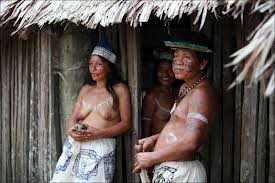Native Groups In The Amazon( Huitotos )
- expeditions george of the jungle
- Dec 3, 2022
- 2 min read

Huitotos
Located on the periphery that encompasses the sumptuousness of the Amazon River, is the indigenous tribe calling themselves the Huitotos. Whose original territory was in the middle of the Caquetá river and its tributaries, but they are scattered in various places in Orteguaza, Caquetá, Putumayo, Caraparana, Igara Paraná rivers and in the vicinity of Leticia.
They come from miscegenation between nascent lineages of different tribes and communities, today is known as the reservations. Amazonia’s enormous hydrographic basin rises in Peru, and just like the imposing river’s course, its voracious channel empties into the Atlantic Ocean of Brazil. These ancient tribes were accentuated from the beginning of the short history of the Americas, in the limits that today encompass the countries of Peru, Brazil and of course, Colombia.
Information about the Huitotos was very scarce until the end of the 19th century. In 1605 they visited Father Ferrer Río Putumayo, but it was only in 1695 that this group bears his name. The first significant contact with the white man occurred in 1886 when at the beginning of the rubber boom the leaders arrived in Putumayo.
Language
The Witoto family (Huitoto, Huitotoano, Witoto) comprises a language, in which it consists of seven languages, which are divided autonomously, of which four are dead, spoken in Colombia, Peru and Brazil.
Their relationship is discussed to be brought together with the Abas Bora to form a group called the Huitoto, another is the second Andyy and introduced into the Macro Bora of the Caribbean. Furthermore, it has been established that this Huitoto language (Witoto) is roughly estimated to be spoken along the Peruvian Napo and Putumayo Ampiyacu rivers. Children learn the language, but many do not use it. It is threatened by 1,130 speakers from an ethnic group of 3,000 members.
Huitoto language (Huitoto, Uitoto) is spoken in the Brazilian state of Amazonas, Alvarães municipality, Meria Indigenous Land; Municipality of Uarini, Miratu Indigenous Land; Municipality of Tefe, Santa Cruz. The size of the group in Brazil and the number of speakers is not defined. Maybe a little over 500 people, which means the language is under threat.







Comments